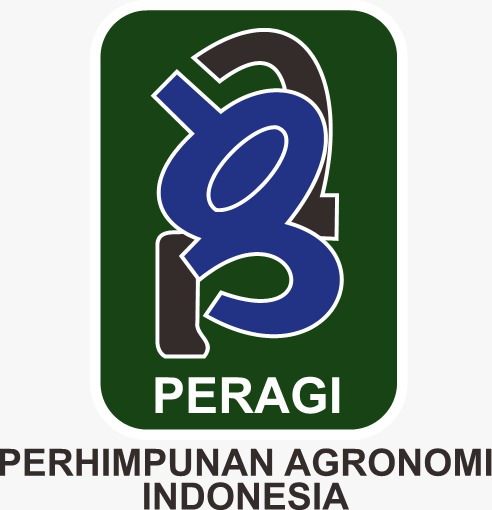Comparison of the Diversity of Weed Types in Oil Palm (Elaeis guineensis Jacq.) Plantations that have not been Replanted and After Replanting in PTPN II North Sumatera
Abstract
Comparison of the Diversity of Weed Types in Oil Palm (Elaeis guineensis Jacq.) plantations that have not been replanted and after replanting in PTPN II, North Sumatra.". This study aims to determine the composition, structure of weed vegetation and the comparison of weed diversity in oil palm plantations before and after replanting. This study used a quadratic method with purposive sampling of weeds where the plots were 1 x 1 m in size with a total of 9 plots. The results of this study found that the composition of weeds on oil palm land before replanting was 12 families and 4 species, while on land after replanting there were 10 families and 5 species. The structure of weeds on the land before replanting with dominant weeds was Chrysopogon aciculatus (Retz) trin with an INP value (25,76%). was Ottochloa nodosa Kunth with an INP value (36.14%) while the lowest value was on weeds with an INP value (3.52%). on oil palm land after replanting the diversity value is I<H'<3
Downloads
References
Ardana, IK, & Kariyasa, K. (2016). Influence of Technological Innovation and Use of Production Input on Productivity of Oil Palm in West Kalimantan Province. Journal of Industrial Plant Research, 22(3), 125–134.
Central Bureau of Statistics of North Sumatra Province, 2020
Makassar Forestry Education and Training Center. 2011. Herbarium as a Planting Reference
Trees. http://www.badikhut.com. Retrieved 14 June 2012.
Een Saputri. 2018. Readiness of Oil Palm Farmers in Facing Replanting in Delima Jaya Village, Kerinci Kanan District, Siak Regency.
Ditjenbun. (2016). Palm Oil Outlook. Ministry of Agriculture.
Handayani, DM 2006. Analysis of Profitability and Income of Paddy Rice Farming by Area and Land Ownership Status in Karacak Village, Leuwilang District, Bogor Regency, West Java. Bogor. [Thesis] Bogor Agricultural University. 85 p.
HastutiP.W.2012, Herbarium, Yogyakarta State University, Yogyakarta.
Hutasoit, F., Hutabarat, S., Muwadi, D. 2015. Analysis of perceptions of RSPO certified independent oil palm smallholders in facing oil palm rejuvenation activities in Ukui District, Pelalawan Regency
Indriyanto. 2006. Forest Ecology. Earth Literature. Jakarta.
Irwanto. 2007. Vegetation Analysis for Management of Protected Forest Areas on Marsegu Island, West Seram Regency, Maluku Province. [Thesis]. Yogyakarta: Graduate School, Gadjah Mad University
Odum, EP 1993. Fundamental Ecology 3rd. WR Sauders Co. Philadelphia.
Setyamidjaja, D. 2006. Oil Palm Cultivation Series. Yogyakarta(ID): Kanisius.
Sembodo, DRJ 2010. Weeds and their Management. Yogyakarta: Graha Ilmu.
Susanti, E., Hutabarat, S., Muwardi, D. 2014. Comparative analysis of alternative conventional oil palm replanting models with underplanting of the People's Core Plantation (PIR) pattern in Sei Lambu Makmur Village, Tapung District, Kampar Regency. Journal of Faperta Vol 1 No 2. Riau University.
Woittiez, LS, Wijk, MT Van, Slingerland, M., Noordwijk, M. Van, & Giller, KE (2017). Yield gaps in oil palm : A quantitative review of contributing factors. European Journal of Agronomy, 83, 57–77
Copyright (c) 2022 Sari Anggraini, Lisa pebrianti

This work is licensed under a Creative Commons Attribution 4.0 International License.
Authors who publish with Jurnal Agronomi Tanaman Tropika (JUATIKA) agree to the following terms:
Authors retain copyright and grant the Jurnal Agronomi Tanaman Tropika (JUATIKA) right of first publication with the work simultaneously licensed under a Creative Commons Attribution License (CC BY 4.0) that allows others to share (copy and redistribute the material in any medium or format) and adapt (remix, transform, and build upon the material for any purpose, even commercially) with an acknowledgment of the work's authorship and initial publication in Jurnal Agronomi Tanaman Tropika (JUATIKA).
Authors are able to enter into separate, additional contractual arrangements for the non-exclusive distribution of the journal's published version of the work (e.g., post it to an institutional repository or publish it in a book), with an acknowledgment of its initial publication in Jurnal Agronomi Tanaman Tropika (JUATIKA). Authors are permitted and encouraged to post their work online (e.g., in institutional repositories or on their website) prior to and during the submission process, as it can lead to productive exchanges, as well as earlier and greater citation of published work.







 More Information
More Information



